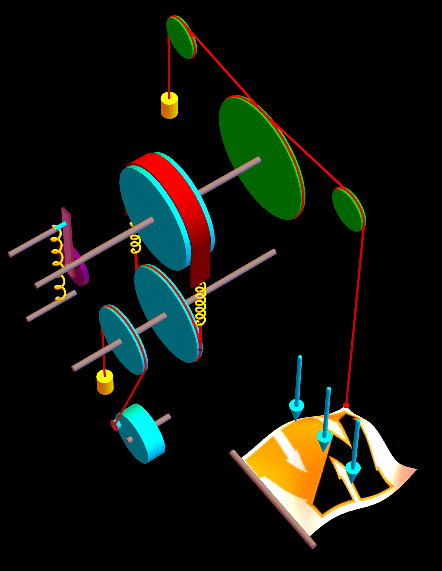Wind is free and ubiquitous and can be harnessed in multiple ways. We recently published an article in the Physical Review demonstrating mechanical stochastic resonance in a tabletop experiment that harvests wind energy to amplify weak periodic signals detected via the movement of an inverted pendulum. Unlike earlier mechanical stochastic resonance experiments, where noise was added via electrically driven vibrations, our broad-spectrum noise source is a single flapping flag.
This research results from a novel collaboration between The College of Wooster and Grinnell College over several years and includes six undergraduate coauthors. The first version of the apparatus was created in the Taylor Hall’s shop at Wooster and used wooden wheels and grocery-store syrup for damping! The design evolved over several years, with the final version at Grinnell sporting shiny aluminum U-channels and 3D-printed plastic wheels.

Schematic of the mechanical stochastic resonance apparatus. At lower right, a wind-blown flapping flag delivers noise to the main axle via a slipless pulley. At lower left, a rotary motor delivers a subthreshold sinusoidal signal to the main axle indirectly via a tensioned slipping belt. At upper left, a bistable inverted pendulum rotates back and forth between two stops.

Thanks, Mark! I enjoy reading your posts as well.